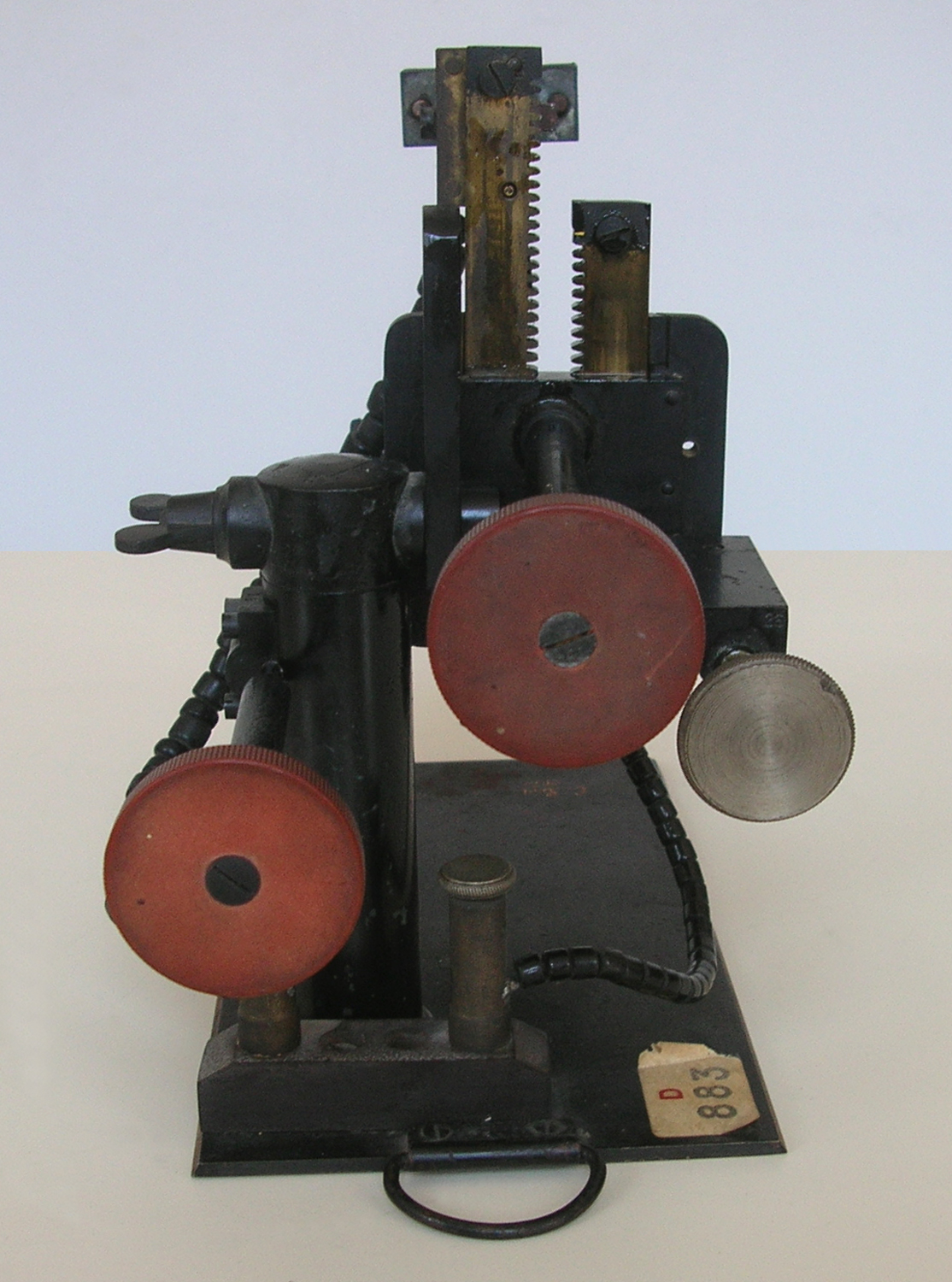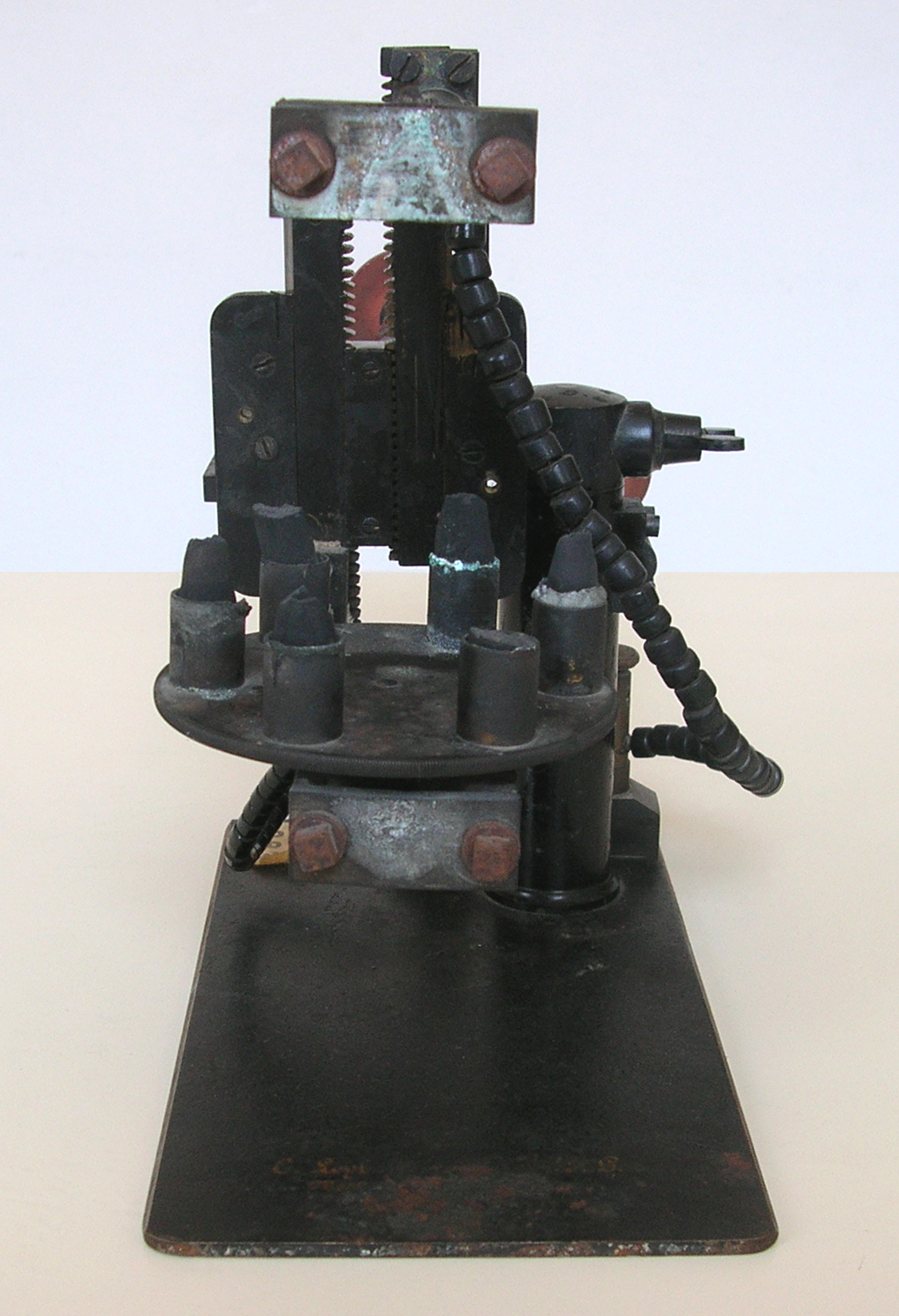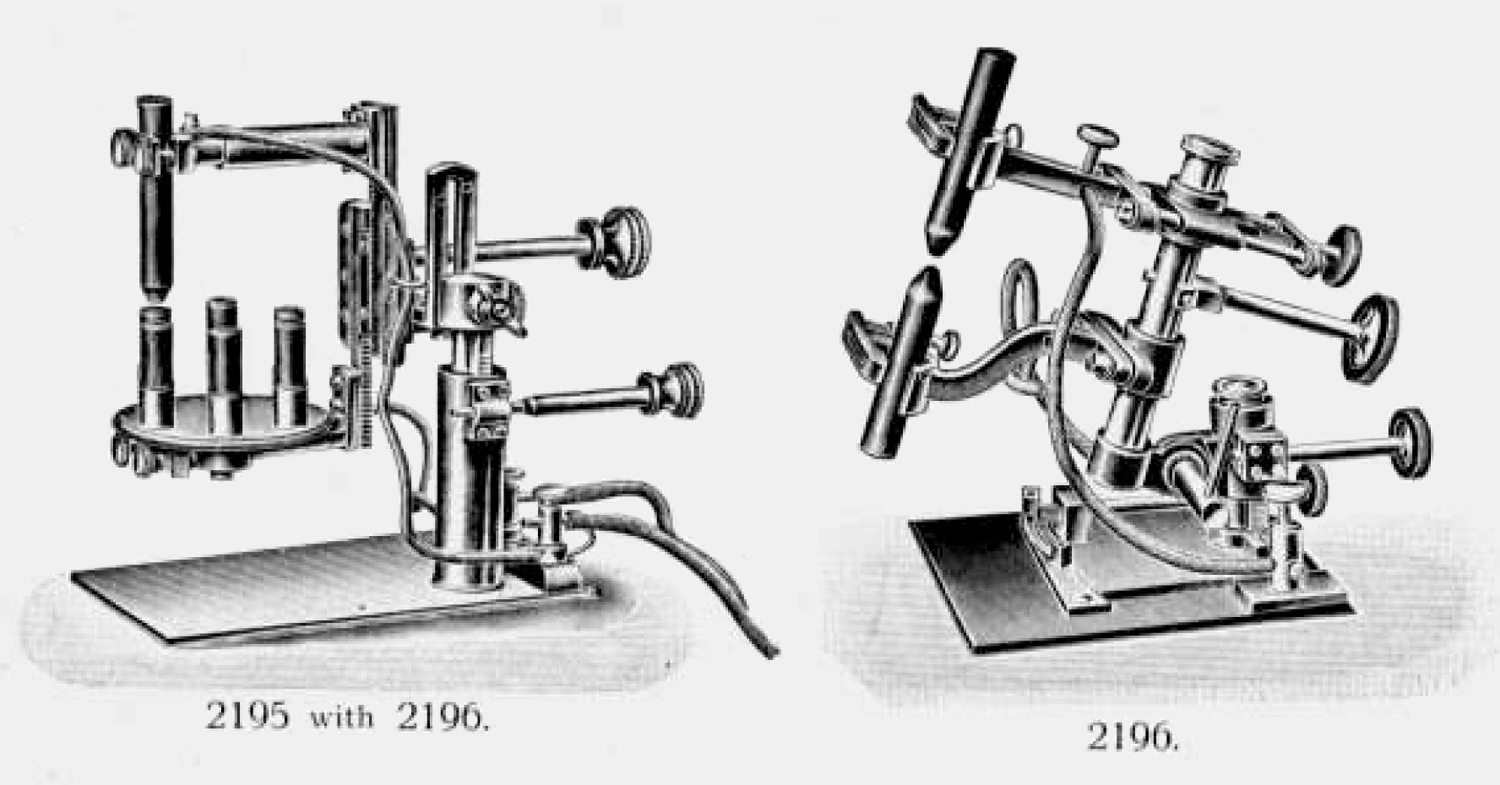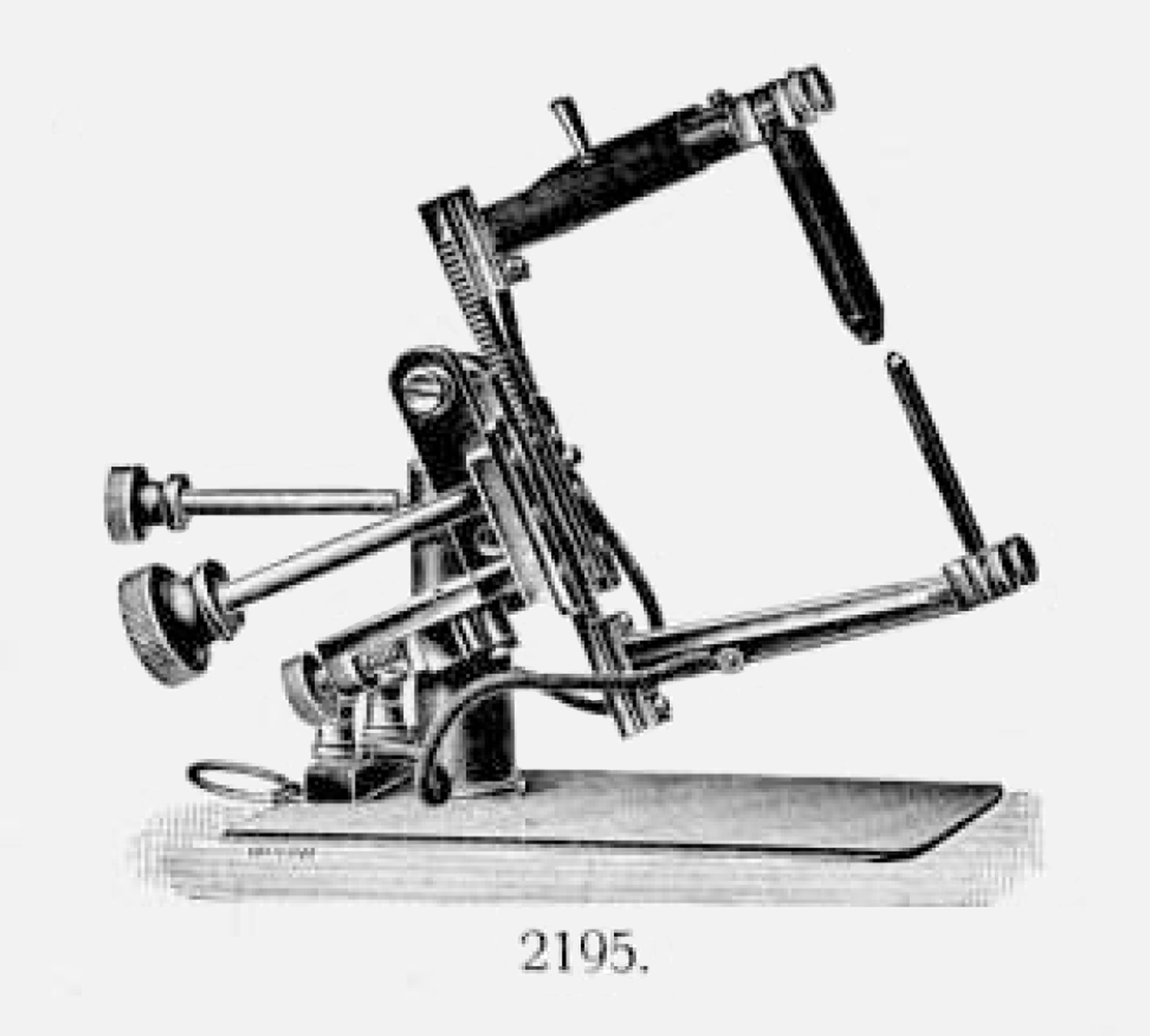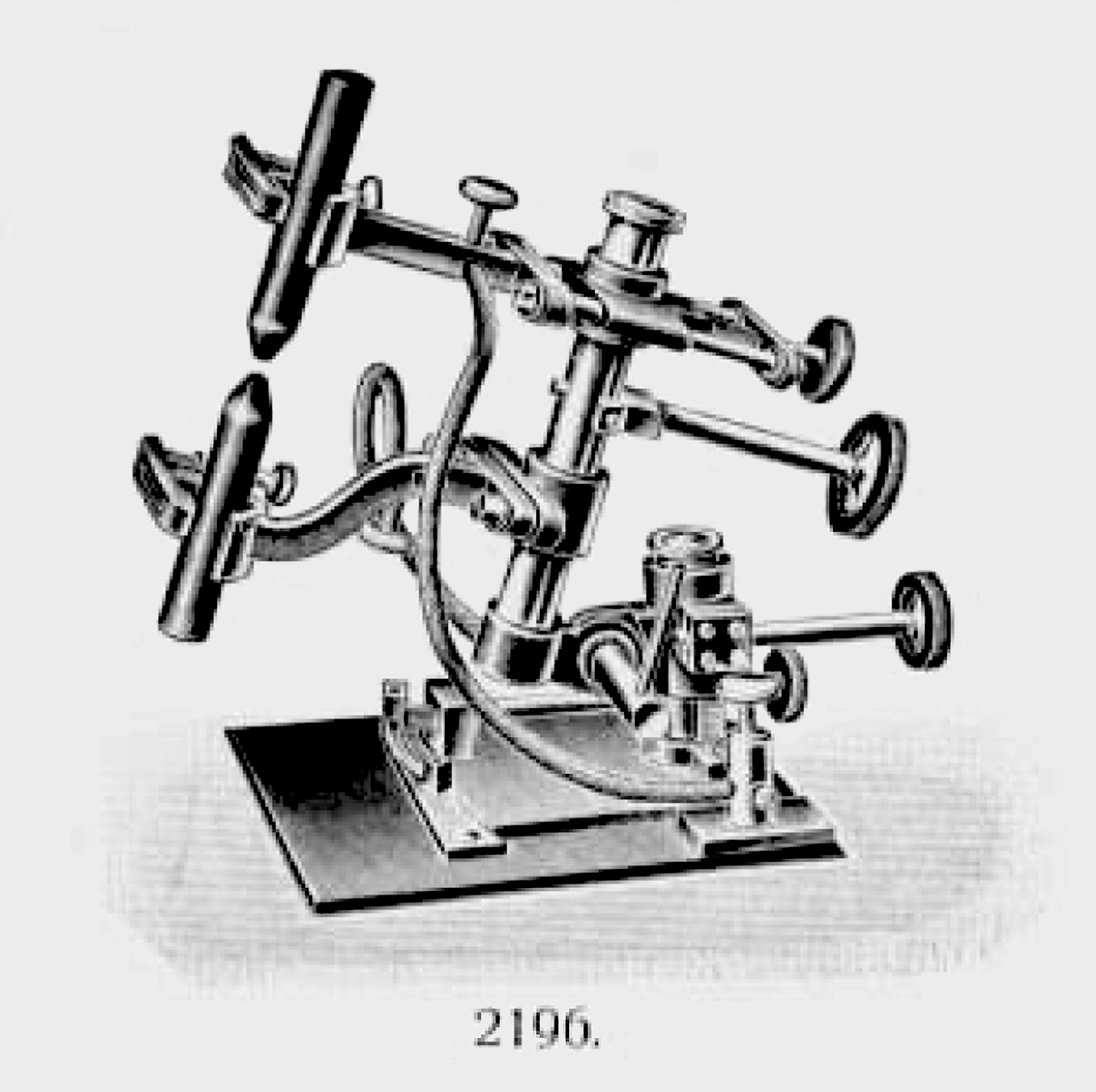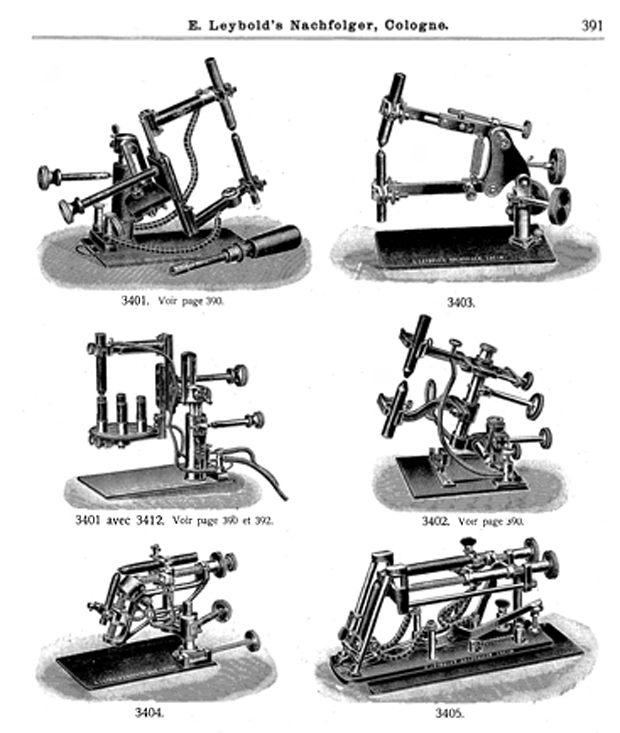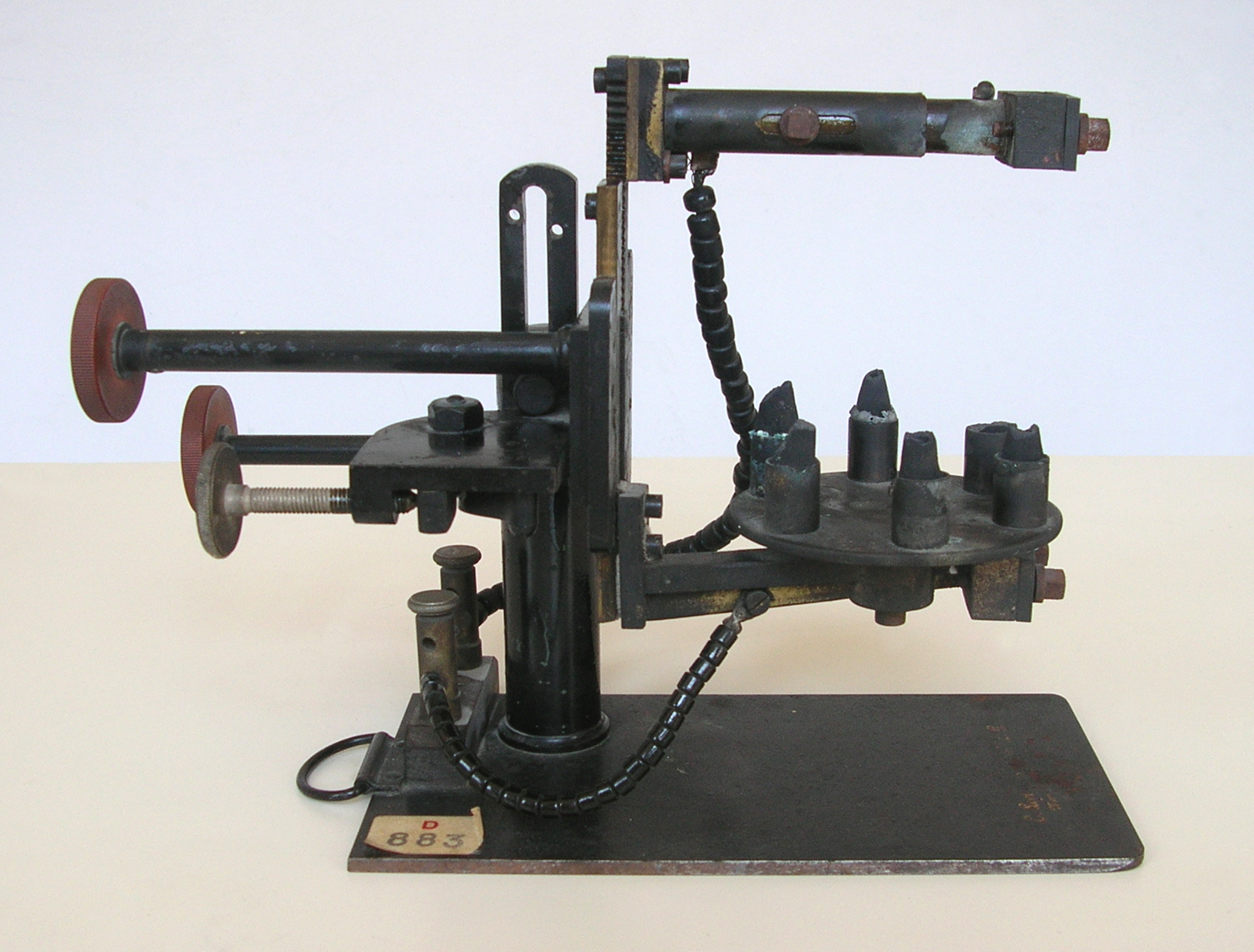 Dispositivo per l’arco voltaico a revolver E. Leybold Nachfolger. Terza parte.
Dispositivo per l’arco voltaico a revolver E. Leybold Nachfolger. Terza parte.
Alle pagine: 112, 113, 114 nella edizione del Catalogue of Physical Apparatus constructed by E. Leybold’s Nachfolger Cologne, databile subito dopo il 1905, rinvenibile all’indirizzo:
https://www.sil.si.edu/DigitalCollections/trade-literature/scientific-instruments/files/52546/
si legge:
«b. Electric arc light.
Where an electric current of at least 40 volts and 10 ampères is available, the purchase of a good electric lamp can too strongly recommended.
Of all artificial sources of light, electric light is the best, on account of its high candle power, compactness, and convenient regulation. A comparison of the different sources of light with reference to their brightness shows immediately the superiority of electric light.
If the brightness produced on a screen from a four wick paraffin lamp be taken as unity, the following numbers are obtained:
lncandescent gas light . . . 1
lncandescent spirit light . . . 1
lncandescent electric light, 100 candles, focus lamp . . . 4
Lime light, compressed oxygen and illuminating gas . . . 12
Lime light, compressed oxygen and hydrogen . . . 16
Lime light, compressed oxygen and hydrogen with burner 2263 . . . 24
Electric are light according to amperage . . . 40-100
We make electric lamps for automatic feed, for hand feed and lamps that can be regulated both automatically and by hand. Automatically regulated lamps have the advantage that these lamps do not require attention during at demonstration.
They possess, however, as compared with hand fed lamps, the following disadvantages:
On the one hand, if the regulating mechanism is a complicated one, when it gets out of order the lamp must be returned to the maker. Further if the automatic feed be arranged for a certain strength of current, it cannot be used for other current strengths; finally it cannot he used for every experiment, for instance in obtaining emission spectra, during the production of which the resistance of the arc alters, for the reversal of the sodium lines etc.
On the other hand the mechanism of the hand feed lamp is extremely simple.
The lamp may be used, within certain limits, with any chosen strength of current and it is suitable for all experiments. It is only necessary in regulating, to bring
the carbons nearer to one another from time to time by a turn of the regulating screw. One soon becomes accustomed to this, so that it is effected almost mechanically.
Our hand feed lamps may be used either with vertical or with sloping carbons so that the change from one position to another is effected extremely quickly. Three screws allow the arc to be displaced vertically and from side to
side, as well as to move the two carbons towards one another. The lower carbon carrier has an attachment in which the revolving stand with 6 carbons for emission
spectra may be placed, as shown in Figure 2195. The lamp is very substantial and accurately finished and is suitable for a current consumption of 10 – 20 amperes.
For higher current strengths we construct a particularly strong model No. 2196.
Where sufficient means are available, we recommend our new Universal arc lamp which may be regulated by hand or automatically. This has been constructed so that the automatic regulating arrangement may he switched out by means of a handle and the lamp regulated by hand without disconnecting. Conversely the hand feed may he replaced by automatic feed in this lamp without the arc thereby becoming extinguished. This model is protected by D. R. G. M.188758.
In order to use this arc lamp for all purposes we have in addition arranged that the arc may he used with direct or alternating current and have also provided an arrangement with revolving disc so that no further apparatus is necessary for emission spectra.
This new arc lamp uses, with both kinds of feed and with direct or alternating current, 10 -15 amperes; the tension at the lamp amounts to 40 volts with direct current and 30 volts with alternating current. The current in brought to two terminals and first passes a switch S which is either
connected with the hand (H) or the automatic feed (A). If switched on H the current goes directly to the carbon holder. The screw H ends in front in a fork and the ends of the carbon holders prolonged backwards lie between. The screw H is screwed in and the arc can be regulated by means of it. If however the lamp is to be regulated automatically, the switch is connected with A and the screw H unscrewed. The current now passes from the switch to the two coils arranged over one another. An iron core is placed in each of these coils and connected with the upper or lower carbon holders; at the extreme ends the cores
carry metal plates. With continuous current these iron cores are drawn into the coil if the arc be too short and thus the carbons are separated. With alternating current the two metal plates are repelled from the coils and the required lengthening in the arc takes place.
In order to unscrew or screw up H more quickly, a hook, not shown in figure, is pulled up with one finger and the screw moved with the other fingers in the desired direction.
Two sliding weights P1 and P2, allow of an automatic feed with a certain current strength and with the most suitable spark length. When these two weights are once adjusted,
it is no longer necessary to make any alteration so long as the current remains the same.
The lower carbon is removable and at R a revolving disc with 6 hollowed out carbons for emission spectra may be fitted. The base of the revolving disc has an arrest contrivance for each of the six carbons, to that these set themselves exactly below the upper carbon and a particularly quick exchange is thus made possible.
The lamp is provided with a key to loosen or tighten up the screws for holding the carbons and thus new carbons may be put in even when the carbon holder is hot. Screw F
is for raising or lowering the whole lamp. Screw B is for a side displacement of the point of light.
When using direct current the + pole is connected with the upper carbon. These upper carbons burn twice as quickly as the lower and are therefore correspondingly thicker.
A crater is formed at the positive carbon from which the greatest light intensity proceeds.
In order to promote the formation of a crater, the positive carbon is provided with a core of soft material. These carbons are called cored carbons, the ordinary negative carbons on the other hand, solid carbons.
In order to secure that as much light as possible will be taken up by the condenser, the carbons arc inclined. With alternating current both carbons burn equally and therefore
the carbons used are of equal thickness.»
Si legge poi a pag. 115:
«2195. Hand feed lamp for direct or alternating current, for current up to 20 amperes; including 12 reserve carbons. (omissis) With order state wheter the carbons are for direct or alternating current. 2196 – for current up 50 amperes, special for cinematographs».
Per consultare le altre due schede scrivere “voltaico” su Cerca.
Foto di Claudio Profumieri, elaborazioni e ricerche di Fabio Panfili.
Per ingrandire le immagini cliccare su di esse col tasto destro del mouse e scegliere tra le opzioni.